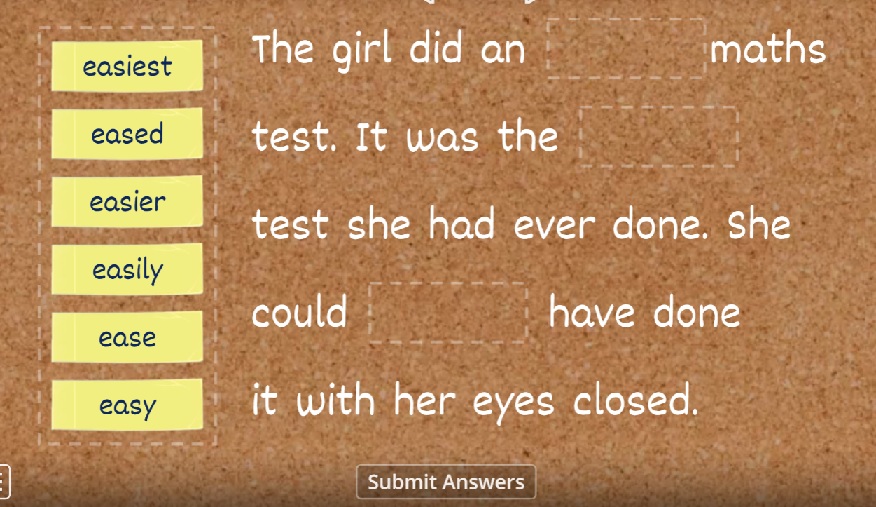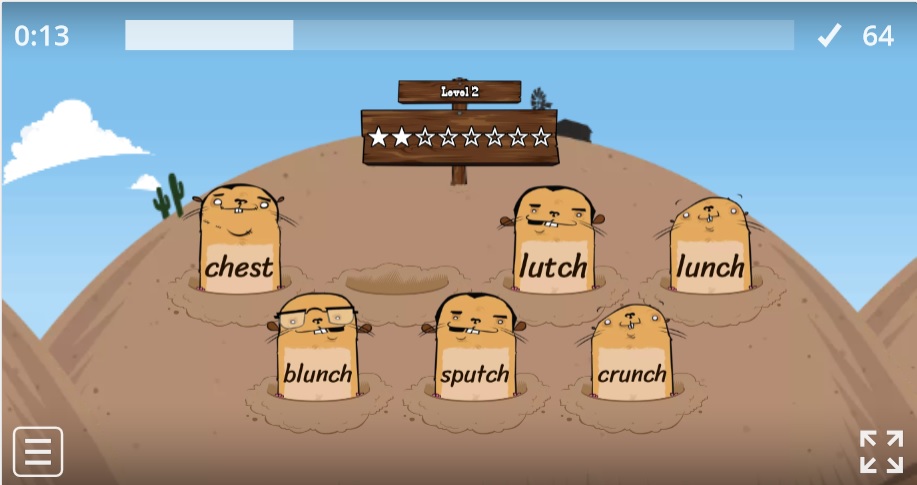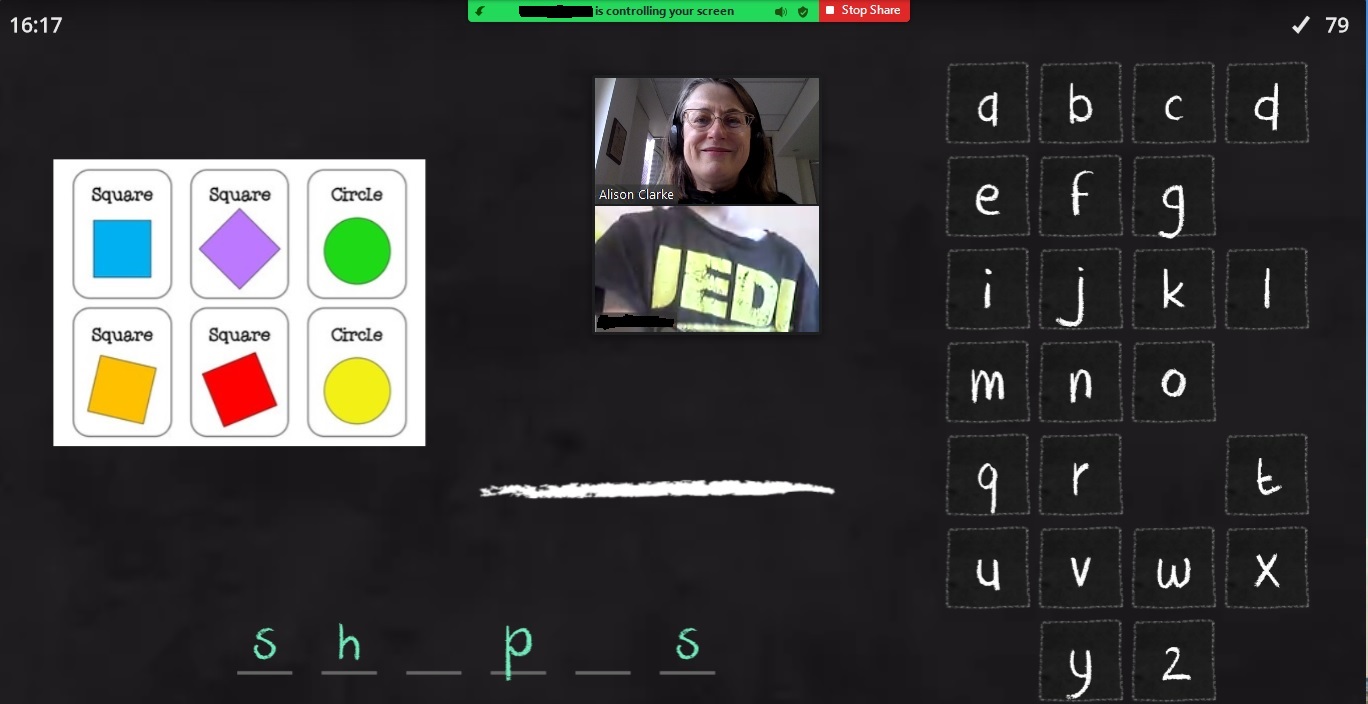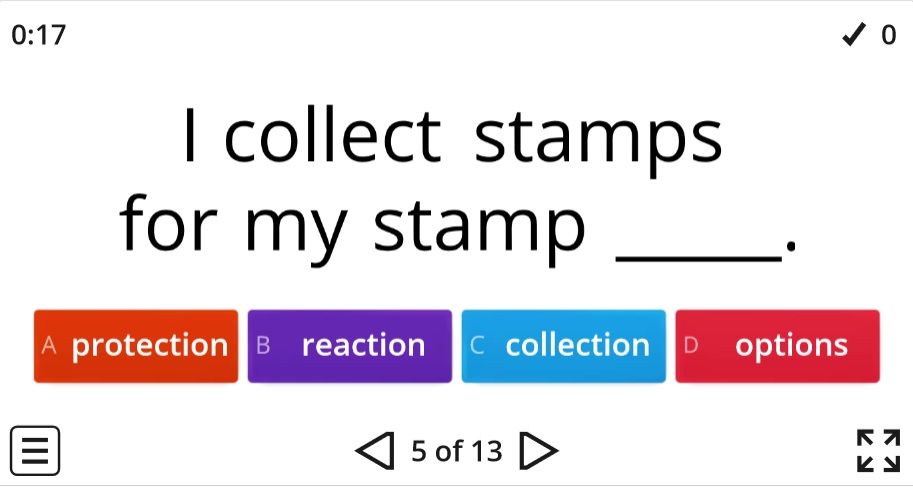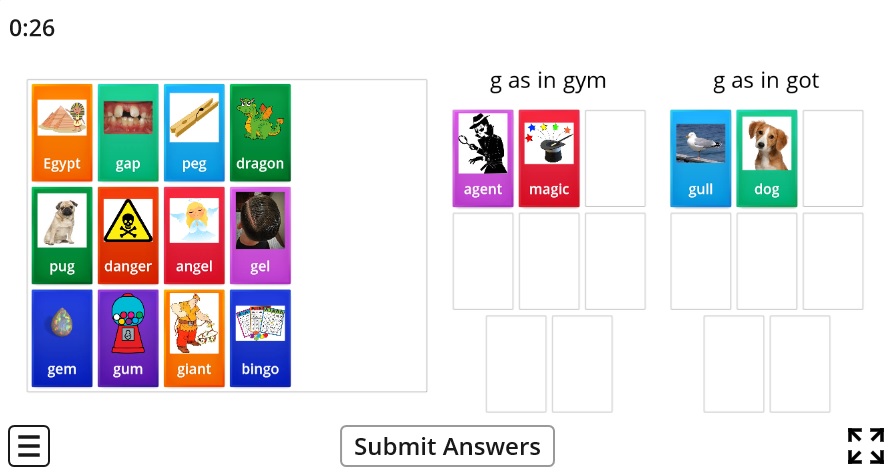“Can I halp you?” The Salary-Celery merger
0 RepliesIf you’re in south-eastern Australia or New Zealand, you’ve probably noticed kids pronouncing words with /e/ (as in ‘egg’) more like /a/ (as in ‘at’) before the sound /l/.
They say things like ‘Can I halp you?’, ‘I falt a bit sick’ and ‘I can do it mysalf’. They pronounce ‘salary’ and ‘celery’ as homophones, hence the name linguists have given this vowel shift: the Salary-Celery merger.
The ‘a’ before /l/ in ‘asphalt’ was being pronounced /e/ when I was scraping my knees on it at school, but ‘a’ pronounced /e/ mainly occurs before /n/, as in ‘any’, ‘many’, ‘secondary’ and ‘dromedary’.
Several other vowels have also morphed a bit before /l/, consider:
- all, ball, call, fall, gall, hall, mall, also, almost, always etc (but not ‘shall’, ‘ally’, ‘alley’, ‘ballad’, ‘gallop’, ‘pallet’, ‘tally’ or ‘alas’).
- walk, talk, chalk, stalk, and baulk (US balk) and caulk (US calk).
- half/halve, calf/calve, behalf (but not ‘salve’ or ‘valve’).
- salt, halt, malt, gestalt, alter, exalt, Walter (but not ‘shalt’).
- fault, vault, cauldron, assault, cauliflower, hydraulic, somersault (but not ‘haul’ or ‘maul’).
The sound /l/ has a vowel-like quality and tends to ‘colour’ the preceding vowel. This is useful for teachers to know, so they can give any confused kids plenty of practice spelling affected words (there’s lots of opportunities to practice writing ‘short vowels’ in a range of phonetic contexts, including before /l/, in Spelfabet Workbook 1)
When kids insist that they hear an /a/ (as in ‘cat’) in ‘halp’, I ask them to say the word in their ‘spelling voice’ (as it’s written), with /e/ (as in ‘red’). Good spellers often say that they pronounce odd spellings a bit weirdly when writing them (Wed-nes-day, bus-i-ness), as a kind of mnemonic. Spelling pronunciations sometimes crop up in comedy too, for example the kniggits in Monty Python and the Holy Grail.
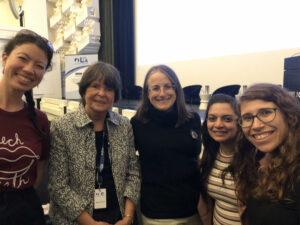
US reading/spelling guru Professor Linnea Ehri was recently here in Melbourne courtesy of Learning Difficulties Australia (the selfie at right proves we met her), and talked about this strategy, which she calls the “Spelling Pronunciation Strategy”. She says that in Connectionist theory, to put a word’s spelling into long-term memory, the letters must be connected to ‘phoneme mates’ in the pronunciations of the word.
To use the Spelling Pronunciation Strategy (AKA “Spelling Voice” in the program Sounds-Write) you separate and say each syllable with stress, and pronounce all the letters. Prof Ehri’s examples were “ex cell ent ”, “lis ten”, “choc o late”, and “Feb ru ary”. She cited two studies (Drake & Ehri, 1984 and Ocal & Ehri, 2017) showing that assigning spelling pronunciations enhanced memory for spellings, in 4th graders and college students.
So in summary, it’s not just harmless to say words in a slightly funny way to halp, sorry, help yourself remember their spellings. It’s officially evidence-based.
New 2 ways to spell vowels cards, including a free deck
0 Replies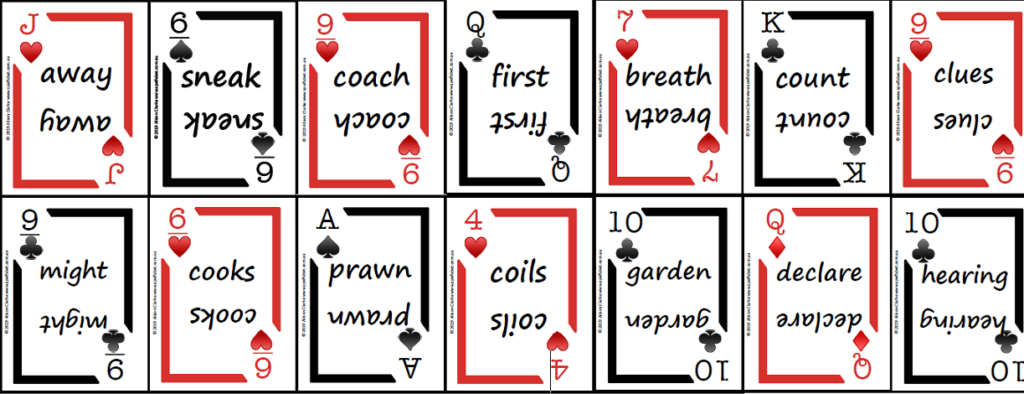
Some students need smaller-than-average steps and extra practice to get spelling patterns into long-term memory. Games are a great, nag-free way to get in lots of targeted, extra repetitions.
The newest set of download-and-print Spelfabet phonics playing cards has 14 decks, each with one vowel sound spelt two ways, and includes a free sample deck:
(more…)New decodable books for ‘o as in love’ and ‘a’ as in ‘ball’
2 Replies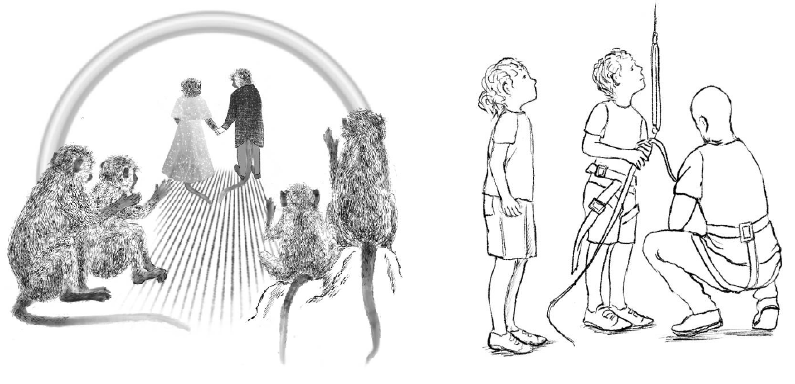
The spellings ‘o’ as in ‘love’ and ‘a’ as in ‘ball’ are in many words young children try to write. ‘One’, ‘love’, ‘some’, ‘once’, ‘all’, and ‘called’ are in the first 100 words on the Oxford Wordlist, ‘brother’, ‘other’, ‘come’, ‘water’, ‘also’, and ‘ball’, are in the 2nd 100, ‘won’ is number 206 and ‘small’ is number 228. *
However, these spelling patterns are often taught quite late in phonics teaching sequences. Many words containing these spellings are in early decodable book ‘tricky words’ lists.
Two new download-and-print Phonics With Feeling books allow children to practise words with these spellings, and notice the patterns in how they’re used: ‘love’, ‘dove’, ‘shove’, ‘glove’, ‘some’, ‘come’, ‘done’, ‘none’, ‘won’, ‘son’, ‘other’, ‘brother’, ‘mother’, ‘honey’, ‘money’ and ‘monkey, and ‘all’, ‘ball’, ‘call’, ‘fall’, ‘hall’, ‘mall’, ‘tall’, ‘wall’, ‘stall’, and ‘small’.
These new books expand the Extended Code Set 1 from three to five books. They otherwise contain only Initial Code spellings, plus the small number of ‘tricky words’ listed at the start of each book for pre-teaching. This means skilled teachers can slot them into phonics teaching sequences without introducing other, more difficult sound-spelling relationships.
The Monkeys’ Wedding
In Zulu, a sunshower is called umshado wezinkawu, meaning ‘monkey’s wedding’, so in some parts of Africa and the Caribbean, people say it’s a monkey’s wedding when the sun appears during rain. The new Phonics With Feeling Extended Code Set 1 book ‘The Monkeys’ Wedding’ is a cute, rhyming story of two monkeys in love whose wedding is almost spoilt by rain:

As well as giving children decoding and vowel-flexing practice, I love that this book offers an opportunity to discuss idioms, and that the idiom it refers to comes from a language and culture many English-speakers know little about.
Author and illustrator Gaia (AKA Teresa) Dovey has excelled herself with this book’s illustrations. The monkeys look fluffy enough to pat, and there are some gleefully naughty-looking little ones.
Up The Wall
The second new Extended Code Set 1 book, ‘Up The Wall’, also presents an opportunity to discuss literal and figurative meanings. It begins with a mother telling her children they’re driving her up the wall playing soccer in the hall, so they decide to go to the mall where there is a climbing wall. One child races to the top of the wall but then freezes, afraid he’ll fall. His mother must literally go up the wall to coax him, red-faced, back down. This series is not called Phonics With Feeling for nothing!

Free quizzes, and free upgrade if you have EC Set 1 already
Quizzes about these and all the other Phonics With Feeling books are available free on Wordwall, or you can download them here. Use them as is, or put some or all questions into Kahoots or other formats to suit your learners. There’s been a slight edit to the first Extended Code Set 1 book, Nancy Visits the City, which is reflected in its updated quiz, and a few other improvements across other books in the series.
Everyone who bought the original Extended Code Set 1 when it had only three books has been sent the new set of five books and updated quizzes via We Transfer. If that includes you, please download the files quickly, before the transfer expires, and let us know if you have difficulty.
Print up to 5 books @ 40c per copy, or up to 30 books @ 20c per copy
All the Phonics With Feeling books are available in either parent/aide sets (print up to 5 copies for 40c per print) or bulk teacher/clinician sets (print up to 30 copies for 20c per print). You provide the paper/card, printer and time printing and assembling them, so please factor these into your ‘is this good value?’ decision-making.
The Phonics With Feeling books aren’t for absolute beginners, as there are already plenty of good decodable books available for them. Some children will be able to read them towards the end of their first year of school, but they’re mostly for children in their second or third year of school, or slightly older catch-up learners.
More information about these books, including how to print and assemble them, can be found in this 2021 blog post. There is also an author interview here, and information about each book’s title, target spelling(s), number of words and plot in its entry in the Spelfabet shop. If you don’t already have the free sample book, it’s here.
* In the first 200 Oxford words containing a one-letter ‘o’ spelling, it is pronounced as in ‘got’ 15 times, as in ‘love’ 8 times, as in ‘so’ 7 times and as in ‘to’ 5 times.
Affordable basic phonics kit
6 Replies
Thanks to the pandemic, many children seem to have done year or more of disrupted schooling without having learnt to read or spell much. A new batch of Australian five-year-olds start school soon, where many will (happily) be taught the systematic, explicit phonics that’s helpful for all, harmful for none and crucial for some*, but many won’t.
The download-and-print Spelfabet Level 1 kit aims to equip you to help beginners and strugglers of any age learn to read and spell one-syllable words with up to seven sounds. The kit follows this teaching sequence (the same as the Sounds-Write program):

The kit contents are a workbook, quizzes, moveable alphabet, word-building sequences, playing cards, reading journal and phonics picture book. The only difference between the parent/aide kit and the teacher/clinician kit is how many copies of the workbook you may print (5 or 30 copies).
All the items in this kit are available separately from the Spelfabet website, except the simplified Moveable Alphabet, which contains only the spellings needed for Level 1. However, it’s cheaper to get the kit than each item separately ($55 including GST for the parent/aide version and $65 for the teacher/clinician one).
Decodable books for reading practice which follow the same teaching sequence include the Units 1-10 Sounds Write books including free e-books, the Units 1-10 Dandelion and Moon Dogs books from Phonic Books, and the printable Drop In Series Levels 1 and 2.
If this kit is too basic for your learner(s), more difficult kits will be available soon.
* See article by Catherine Snow and Connie Juel (2005) at https://psycnet.apa.org/record/2005-06969-026
New Phonics With Feeling books and author interview
3 Replies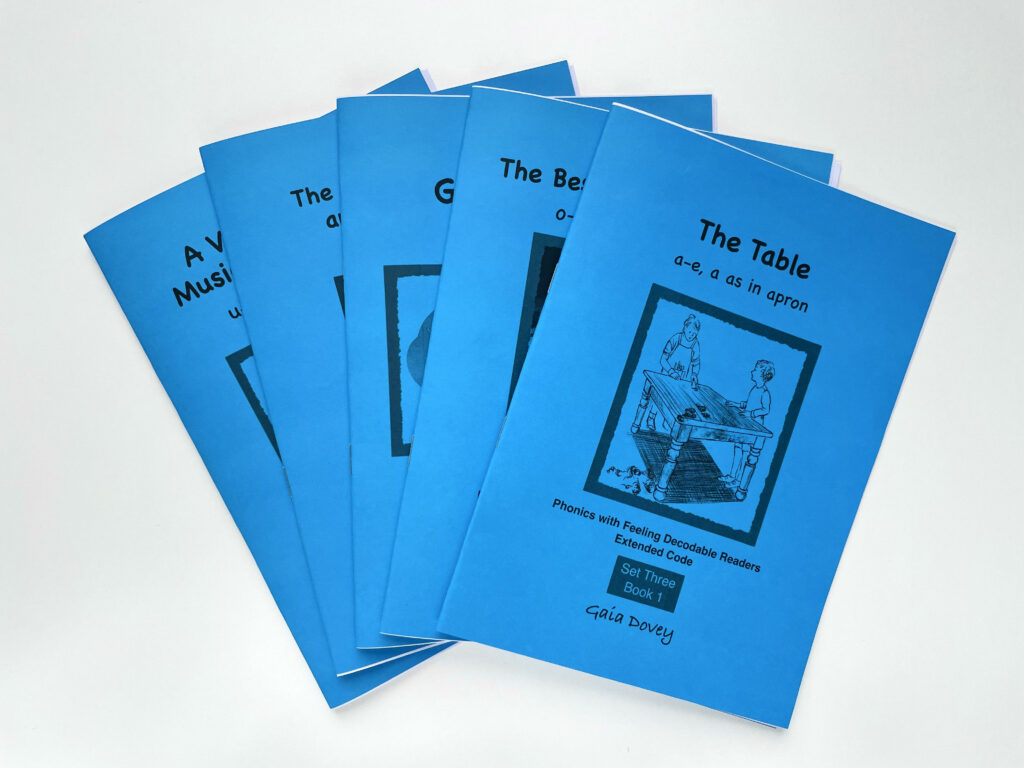
Set Three of the download-and-print Phonics With Feeling Extended Code readers are now available from the Spelfabet shop.
These books provide lots of reading practice of words with single-letter ‘long’ vowel sounds, as in ‘apron’, ‘being’, ‘final’, ‘open’ and ‘using’.
Many of these are suffixed forms of the ‘split vowel’/’silent final e’ spellings in Set Two e.g. make-making, Swede-Swedish, ice–icy, hope-hoped, cute-cutest. Word lists at the start of each book make this explicit.
The ‘c’ as in ‘ice’ and ‘g’ as in ‘age’ spellings, which often occur with these spellings, are practised in the Extended Code Set One books.
The Set Three books also include the ‘short’ vowel sounds, as in ‘at’, ‘red’, ‘in’, ‘on’ and ‘up’. When tackling new words, children should be encouraged to try both sounds for a vowel letter, if the first sound they try doesn’t produce a word that makes sense. This requires phoneme manipulation skills, and the knowledge that a spelling can represent more than one sound.
Like the other Phonics With Feeling books, the Set Three books have a print-5-copies version (parent/aide) for 40c per print, and a bulk print-30-copies version (teacher/clinician) for 20c per print. Our free quizzes (downloadable or on Wordwall) have been updated to include Set Three.
Teresa Dovey (pen name Gaia Dovey, as that’s what her grandkids call her) is the author of the Phonics With Feeling decodable readers. Here’s a 15-minute interview in which she discusses why she started writing the books, why they’re called Phonics With Feeling, her academic background in English Literature, what the books are like, who they’re for, how they can be used, and some of the feedback she’s received on them.
We hope these books make decodable text interesting and enjoyable for children, and affordable for adults, and that they help kids learn to decode as well as Teresa’s grandkids, so they can go on to enjoy reading whatever they choose.
If you’ve tried the books, please share any comments or feedback you have below.
Top 10 online PA/phonics resources/activities
23 Replies200+ days in COVID-19 lockdown and no clear end in sight, so I’m scratching around for fresh ways to target phonemic awareness, phonics and morphology online. Maybe you are too. Here are some things I was SO GRATEFUL to find. A million thanks to their creators. Please add your favourite resources and ideas in the comments.
- Wordwall
I think my head would have imploded in the last 18 months without a Wordwall subscription (AUD$12 a month for all the games). I’ve made lots of activities which you can use for free, and so have many others.
Only the crossword and hangman games require spelling rather than reading to play, but not to create. I therefore get kids to help me create a game online: first choose a game, type the target words/sentences into it, then play the game, then go on the leader board. Playing the game again can be part of the homework, either on a computer or as a printable crossword or word search.
2. Phonic Books Moon Dogs At Home books and other resources
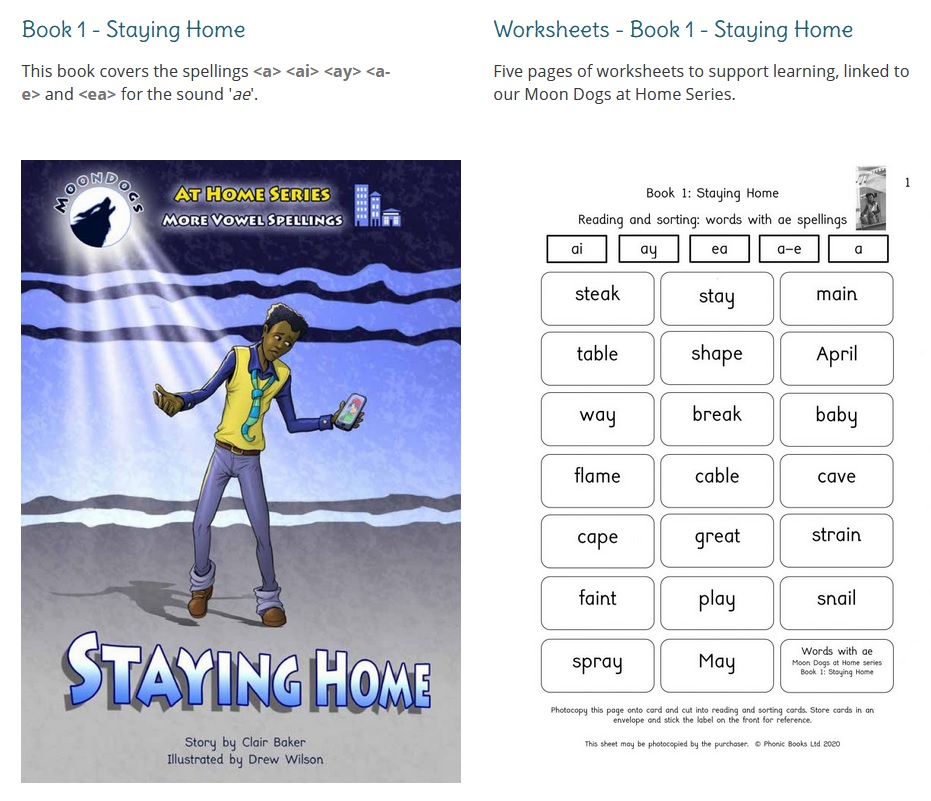
We use the physical Phonic Books resources a lot, and have found their free online resources very useful during our lockdowns. So generous, and so relevant. A lot of the WordWalls we’ve created also match their books’ teaching sequences.
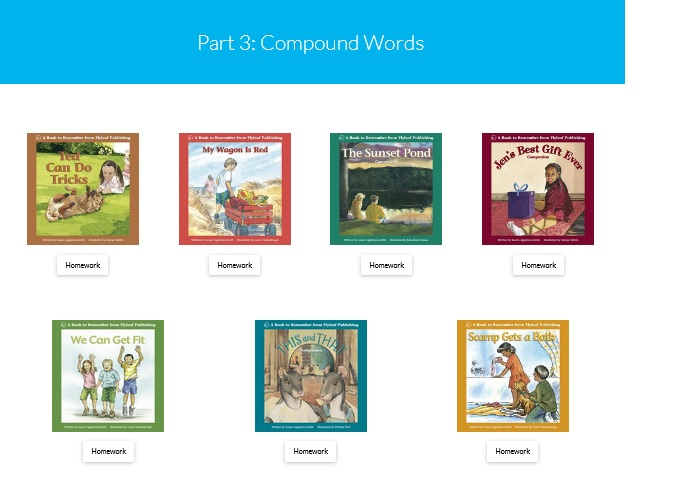
Flyleaf’s Online Portal contains lots of cute books from the UK which are perfect for online use, and all free at present, because of the pandemic. Again, so generous! Jen’s Best Gift Ever is my favourite, click here to read it, and here’s a comprehension quiz I’ve made as a follow-up activity (use it as a Gameshow Quiz for more pizazz).
4. ICT Games
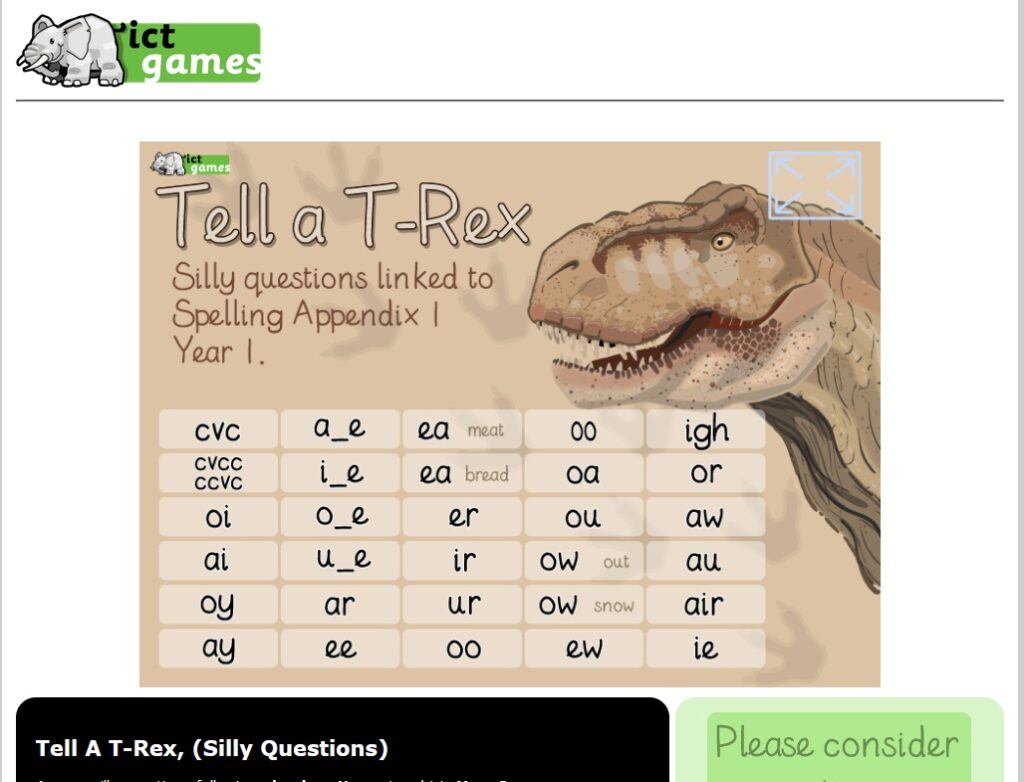
ICT games are all free online, and a quick, fun way to warm up or finish off a session. I often ask kids to type their own lists into Help A Hedgehog, then see how many they can read before the 90 second timer runs out. Other favourites are Tell A T-Rex, Poop Deck Pirates, Viking Full Circle, Forest Phonics, and Phonics Finder. This site runs on a donation model because the husband-and-wife team behind it think no child should be prevented from learning by lack of money. So if you can afford to donate, please do.
5. Sounds Write interactive whiteboard activities

If you’re using the program Sounds-Write, this USB contains heaps of activities ready for use online. They cover the Initial Code (one-letter=one-sound spellings plus major consonant digraphs) plus vowel spellings up to Sounds-Write Unit 28. The USB costs AUD$95, and I’ve definitely gotten my money’s worth.
Because many other Sounds-Write activities are provided as pdfs as part of the training, they have also lent themselves to online use (see item 8 below), and the Aussie/NZ Sounds-Write community has lots of great ideas and resources.
6. Little Learners Love Literacy apps and other resources
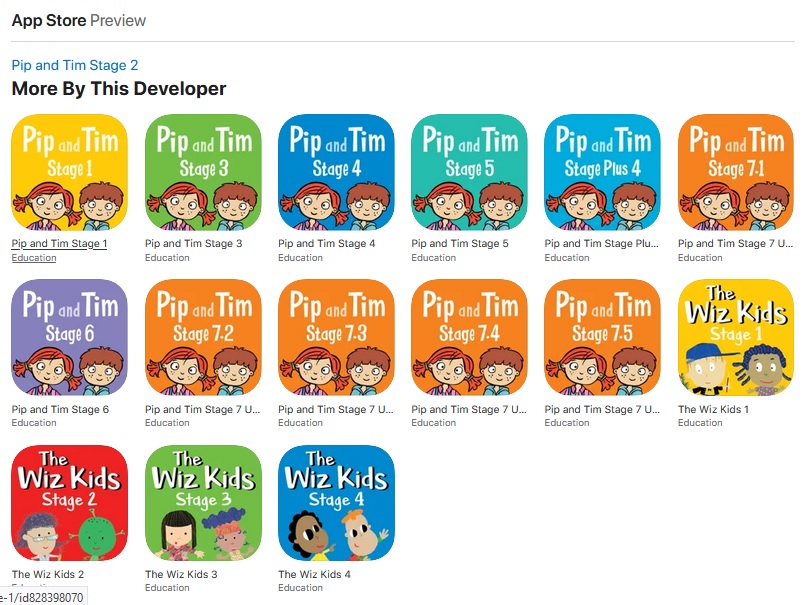
The app versions of the lovely LLLL books have been a great way to show young clients the books, by sharing the iPad screen online. Always affordable, the iPad versions are currently free till the end of September (at least in the Australian store). Which is so incredibly generous, and will help so many young, locked-down children learn to read. Lots of paper-based LLLL activities also lend themselves to online use, see item 8 below.
7. Powerpoint versions of decodable texts
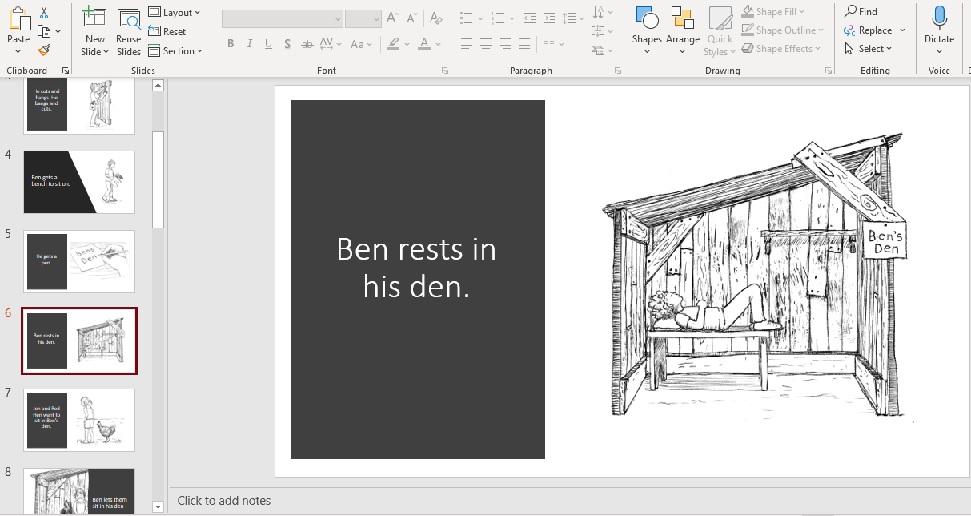
Some kids with good keyboarding skills like typing a simple story to dictation, to create a book they can then show a parent or teacher. I’ve used some Phonics With Feeling books for this, with author permission. I take screenshots of the pictures and paste them onto slides, type the text, then use Powerpoint’s formatting suggestions to make it look more schmick. Then I save it, delete the text and save it again under a different file name. Voila! A simple onscreen reading then spelling activity with large text.
8. Adobe Acrobat Reader editing tools
We use Zoom and it has been excellent, but I rarely use their whiteboard or editing tools. The free Adobe Acrobat editing tools work much better with pdfs. You can scroll through homework and cover it in ticks. You or the learner can type, change the font size and colour, and move text around. You can underline or put boxes around target words in sound searches (we play a guess-how-many-jellybeans-in-the-jar game with these, first guessing how many words with the target sound there will be). I just wish I could turn off the predictive text! (any ideas? I’ve tried everything!)

You can also play games (like the one above from Nicole Brady) using big dots as counters. Sounds-Write, Phonic Books and Little Learners Love Literacy books all have paper-based games that can be scanned as pdfs and used this way, and there are digital versions of the LLLL books. I use the iPad or iPhone app Make Dice held up to the camera for dice games, as I’m rubbish at online dice (all tips gratefully received). Make Dice can also replace the spinner for the Phonic Books Spin, Read and Spell games.
9. Kahoot!

I’m sad to say that I’ve only recently figured out that Kahoot! can motivate many kids to do quite a lot of reading. The best music teacher in the world (hi Roz!) told me it had revolutionised her lessons. Kids are often familiar with it from school, and think it’s fun and cool. We’re writing some downloadable quizzes now which should be easy to turn into Kahoot!s.
10. Jamboard
Google’s Jamboard is another useful tool I wish I’d discovered earlier. It’s like an online whiteboard with colourful post-it notes, from which I’ve made simplified versions of my moveable alphabet for word-building sequences, e.g. here the learner would be asked to change “stitch” into “switch”:
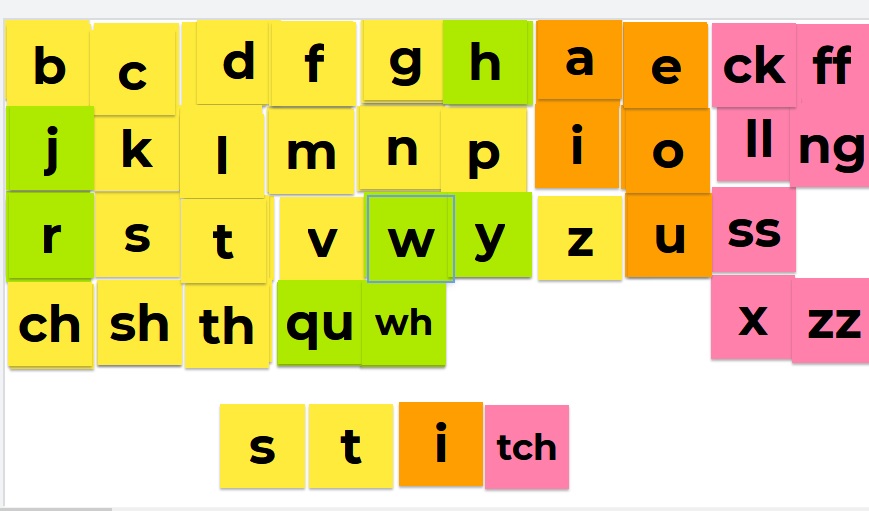
Kids tend not to stretch or rotate the tiles the way they have in other formats I’ve tried using for this activity. Jamboard is also a quick way to create neat word sorting activities:
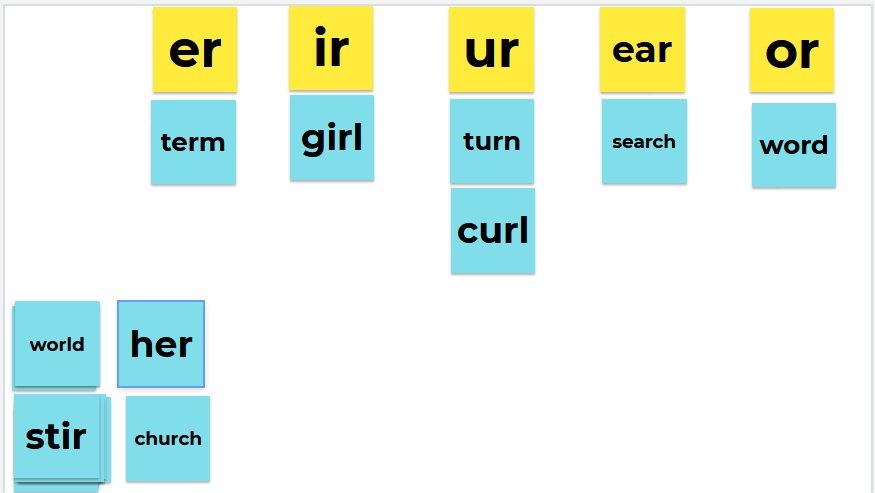
I get words for these sorts from my website’s sorted-by-sound lists (for same-sound-different-spellings activities) or sorted-by-spelling lists (for same-spelling-different sounds activities).
I hope you found some useful information in all that, especially if you’re still working online too. Pretty please leave any great ideas you have to share in the comments.
New Spelfabet workbooks and EOFY discount
24 Replies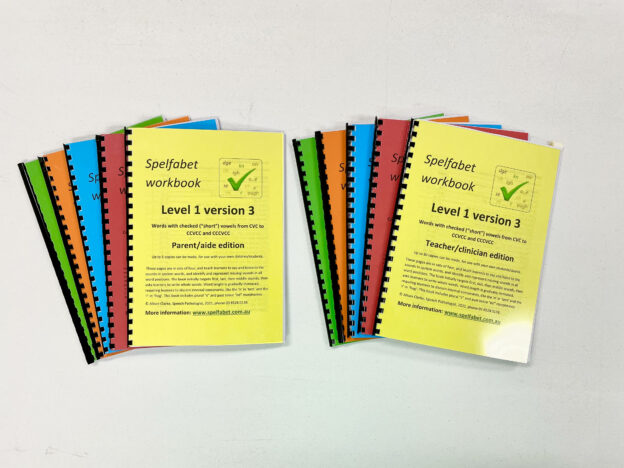
I’ve finally finished five new download-and-print Spelfabet workbooks. These version 3 books better align with the Sounds-Write program and the Phonic Books myself and my colleagues are now often using, and with the Drop In Series books for older learners.
For a 20% discount on these and anything else in the Spelfabet shop, type the coupon code “EOFY 2021” at the checkout.
Many of our clients have memory, attention, language or other difficulties as well as learning difficulties, and struggle to make the transition from Sounds-Write’s Initial Code to the Extended Code, which requires them to learn several spellings of a new vowel sound at once.
We only see our clients weekly or fortnightly, so need lots of activities that are easy for parents to supervise at home. I thus wanted new workbooks to teach vowel spellings more gradually, with earlier, explicit teaching about morphemes and work on polysyllabic words, and reviewing prior learning in lots of sentence-writing with punctuation (having read The Writing Revolution).
I’ll be talking about meeting the needs of clients like these at the free online Sounds-Write 1:1 Symposium on May 23-28. The lineup is amazing, it’s hard to know where to start, don’t miss it!
I’ve made videos about each new workbook, in which I hope you enjoy my fire-engine red fingernails (covering ugly nail bruise from dropping a chookhouse paving stone on my finger, yeow). There are also detailed descriptions of each book in the website shop, but essentially their contents are:
Level 1: Words with checked (‘short’) vowels from CVC to CCVCC and CCCVCC (C=consonant, V=Vowel)
Level 2: Consonant digraphs, basic suffixes, and up to three-syllable words with varied stress
Level 3: “Long/short” vowel contrasts, “soft” c and g, extra suffixes and some prefixes
Level 4: Seven extra vowel sounds, four extra vowel spellings, and more practice of patterns introduced in earlier books.
Level 5: 14 extra vowel spellings and more practice of previous patterns.
Like the previous workbooks, Version 3 has a parent/aide edition and a slightly more expensive teacher/clinician edition, the only difference being that you can print more copies of the teacher/clinician file. File pictures are in colour, but you don’t have to colour print them. Most of the pictures in the workbooks are PCS, a trademark of Tobii-Dynavox LLC, all rights reserved, used with permission.
The old Version 2 workbooks and kits are still in my website shop in the “old versions” folder, if you still want one, or haven’t finished downloading ones you’ve bought. Sorry that I’ve only been able to finish half the workbooks for Version 3, I’m working on more now, but life is busy!
Hope you and yours are all staying virus-free (I’ve had my first vaccine), and I’d love to hear your thoughts on the new workbooks.


